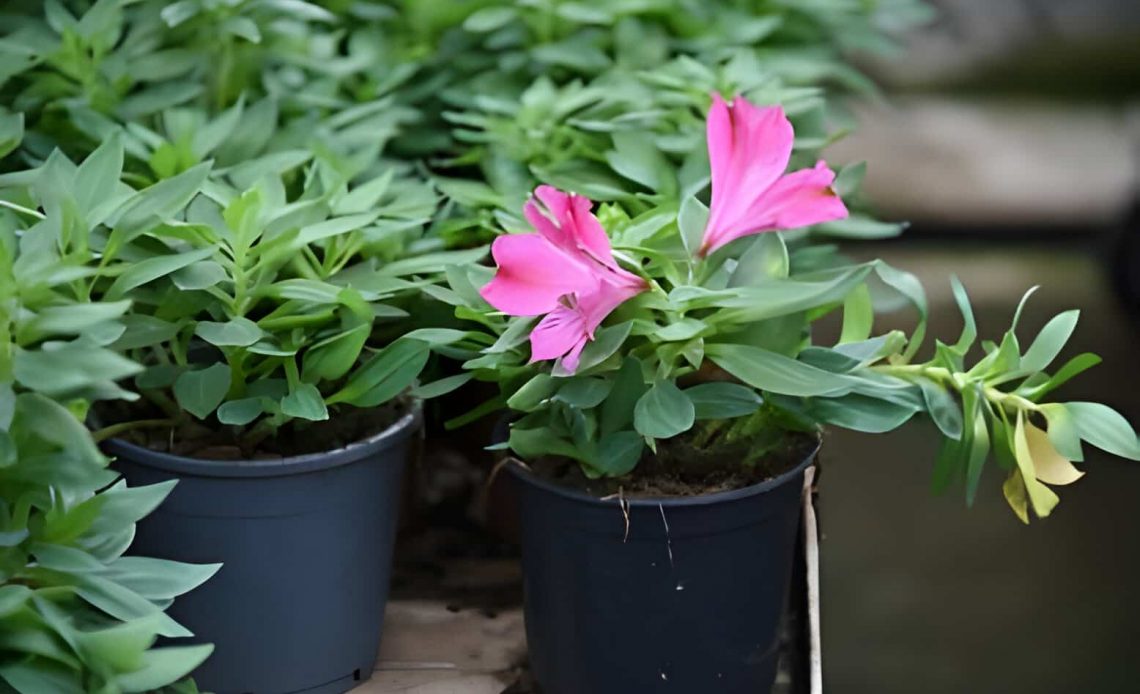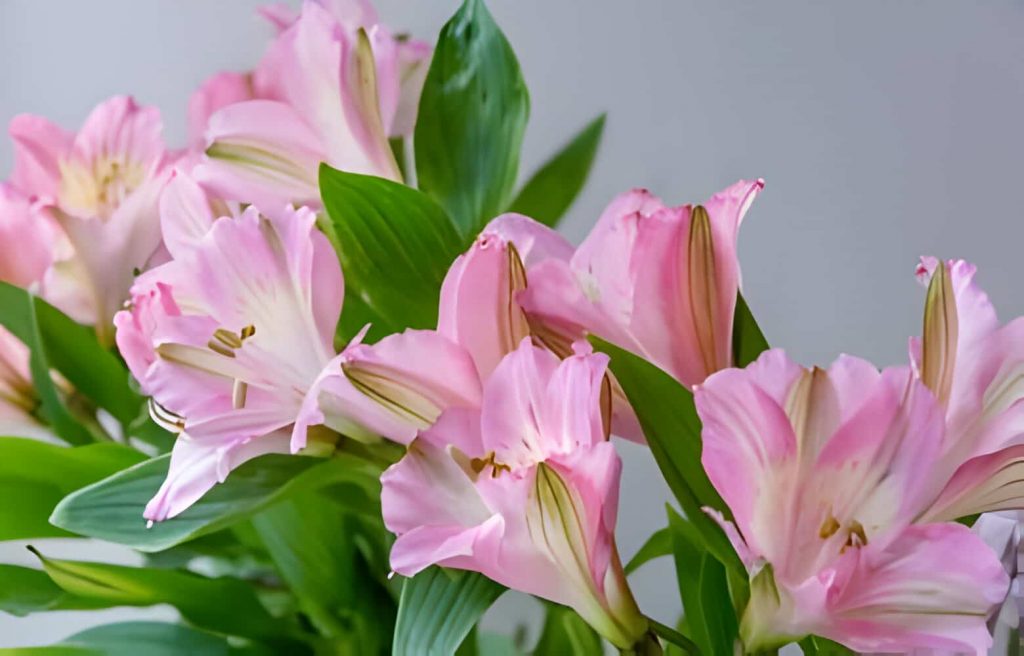
Alstroemeria, also known as the Peruvian Lily, is a vibrant and popular flower prized for its long-lasting blooms and unique ruffled petals. With proper care, these beauties can grace your garden or brighten your home for months on end. This alstroemeria care guide will equip you with everything you need to know to grow and maintain thriving alstroemeria plants.
Alstroemeria Overview
Alstroemeria, also known as the Peruvian Lily, boasts a vibrant range of colors, including pinks, oranges, yellows, purples, and even bi-colored varieties. Their trumpet-shaped blooms appear in clusters atop tall stems, adding a touch of elegance to any setting. Beyond their captivating beauty, alstroemeria flowers hold a special meaning. The rich meaning of alstroemeria flower allows them to convey heartfelt thanks. Alstroemeria are also known for their long vase life, making them a popular choice for cut flowers.
Types of Alstroemeria Flowers

The world of alstroemeria offers a variety to suit every taste. Here are some popular cultivars to consider:
- Bali: This variety features vibrant orange blooms with dark markings in the center.
- Candy: Soft pink petals with a touch of yellow at the throat make Candy a delightful addition to any garden.
- Fougere: A truly unique selection, Fougere boasts stunning green and white striped flowers.
- Inca Ice: Cool and refreshing, Inca Ice showcases white blooms with icy blue accents.
- Indian Summer: Warm hues of yellow, orange, and red come together beautifully in Indian Summer alstroemeria.
- Princess Fabian: This regal variety displays deep purple flowers with a velvety texture.
How to Grow Alstroemeria & Tips
Growing alstroemeria is easier than you might think! Here are some key factors to consider:
Sunlight
Alstroemeria thrives in areas with full sun to partial shade. Aim for at least 6 hours of direct sunlight daily. So Alstroemeria isn’t a fan of all-day sunbathing. While they crave sunshine, a little afternoon shade is ideal. Think of it like a vacation for your flowers – a break from the hottest part of the day to keep them blooming their brightest. Aim for a location with full sun in the morning and some dappled shade in the afternoons.
Water
Consistent moisture is crucial for alstroemeria. Water regularly, allowing the soil to dry slightly between waterings. Avoid soggy conditions, as this can lead to root rot.
Temperature
Alstroemeria prefers cool to moderate temperatures, ideally between 65-80°F (18-27°C). They are generally cold-hardy in zones 7 and above.
Toxicity
Be aware that alstroemeria is mildly toxic if ingested. Keep them out of reach of children and pets.
Alstroemeria Care Quick Guide

Alstroemeria, with their captivating blooms, are surprisingly easy to cultivate! To ensure success, remember these key alstroemeria care tips: provide at least 6 hours of daily sun (partial shade works too!), water regularly allowing the soil to dry slightly between waterings (avoiding soggy conditions), and maintain cool to moderate temperatures (ideally 65-80°F). During the growing season, a balanced fertilizer or one high in potassium can further encourage vibrant blooms. With consistent care, your alstroemeria will reward you with a dazzling display of color throughout the season!tunesharemore_vert
Pests & Problems
lstroemeria’s natural defenses: Fortunately, alstroemeria’s slightly toxic leaves and flowers deter most nibblers from the animal kingdom. This built-in defense system helps them avoid becoming a tasty treat for hungry pests.
Insect Invaders: However, a few determined insects can still cause trouble. The most common culprits include aphids, slugs, spider mites, and thrips. These invaders not only damage the plant by feeding on its sap, but they can also carry and spread diseases.
Combating Common Problems:
- Freezing Fury: While alstroemeria is a resilient plant, freezing temperatures can damage them. To avoid this, plant them in areas with good sun exposure and bring potted plants indoors or to a sheltered location when cold weather approaches.
- Fungal Foes: Fungal diseases can pose a threat to alstroemeria. A common one is Pythium root rot, caused by excessive moisture in the soil. This leads to stunted growth and wilting stems. Another enemy is Botrytis blight, a gray mold that thrives in warm, humid conditions caused by overcrowding.
Alstroemeria Repotting & Propagation

As your alstroemeria thrives, it may need a new home! Repot container plants every 2-3 years in spring or summer, choosing a pot with good drainage slightly larger than the current one. For established clumps in the ground, spring or early summer is also prime time for division. Simply dig up the clump, carefully split it into sections with healthy roots and shoots, and replant each division. You can also propagate alstroemeria through stem cuttings taken in spring or summer. Choose healthy stems, remove lower leaves, dip the cut end in rooting hormone (optional), and plant in a pot with well-draining mix. With a little care, you can enjoy even more of these vibrant blooms!
Alstroemeria Aftercare
To extend the bloom time of your alstroemeria, deadhead spent flowers regularly. This encourages the plant to produce more blooms. Once flowering ceases, you can cut back the stems to promote new growth. In colder climates, apply a layer of mulch around the base of the plant for winter protection.
FAQs About Alstroemeria Care
Is Alstroemeria an annual or perennial?
Alstroemeria are perennials in warmer zones (7-10) but may be treated as annuals in colder climates.
Should Alstroemeria be cut back?
Yes, cutting back spent flowers and stems after flowering encourages new growth and prolongs the blooming season.
How long does Alstroemeria last?
Alstroemeria flowers can last up to two weeks in a vase with proper care.
What’s the best soil and fertilizer for Alstroemeria?
Well-drained, fertile soil is ideal for alstroemeria. During the growing season, use a balanced fertilizer or one high in potassium to promote flowering.
Can you grow Alstroemeria in pots?
Absolutely! Choose a pot with drainage holes and use a good quality potting mix. Ensure the pot receives sufficient sunlight and water regularly.
By following this alstroemeria care guide, you can enjoy the beauty and charm of these captivating flowers for years to come. With a little effort, your alstroemeria will thrive and reward you with a stunning display of color throughout the season.

I’ve always loved alstroemerias! This guide is super helpful. I’m excited to try growing them in my garden this year. Thanks for the tips